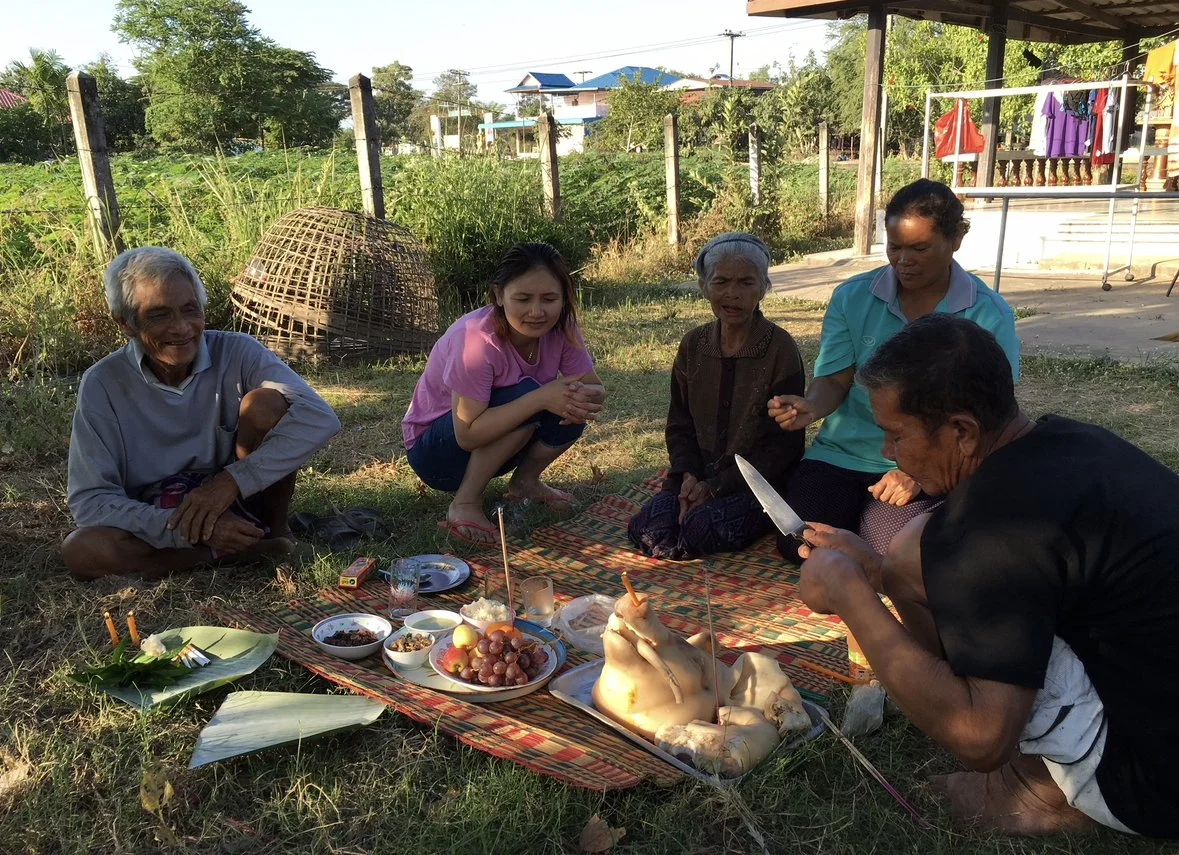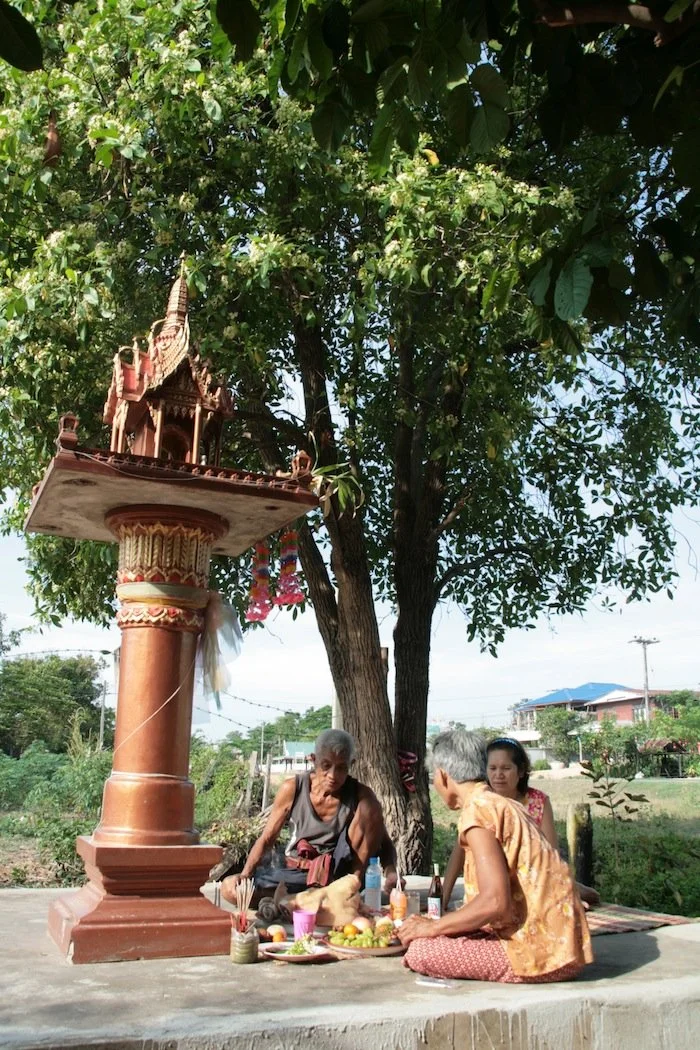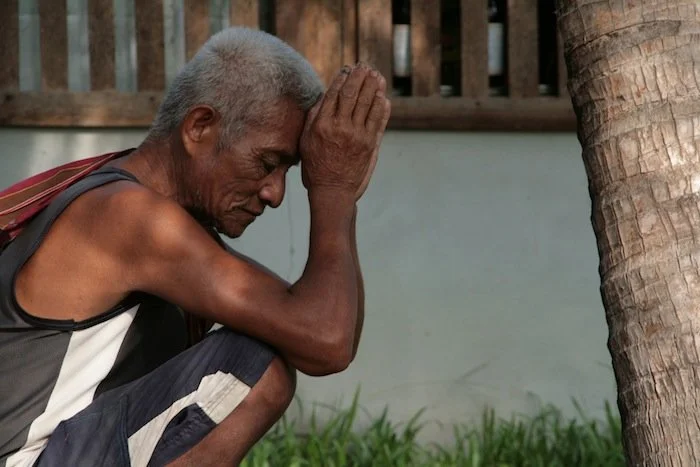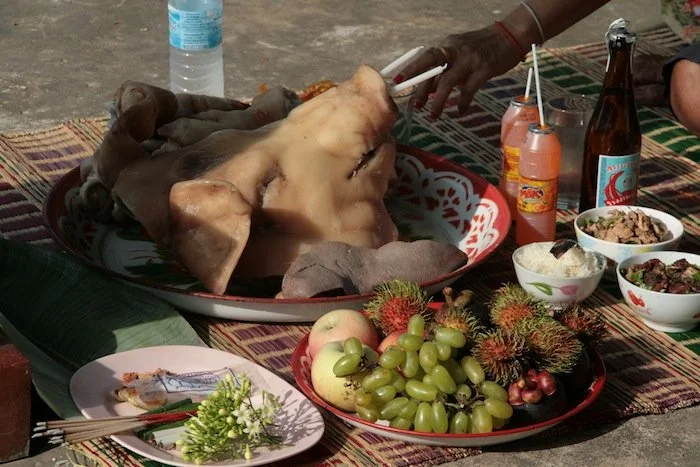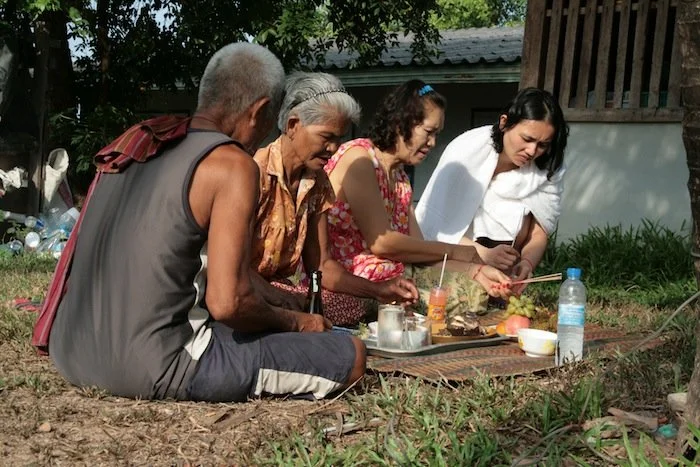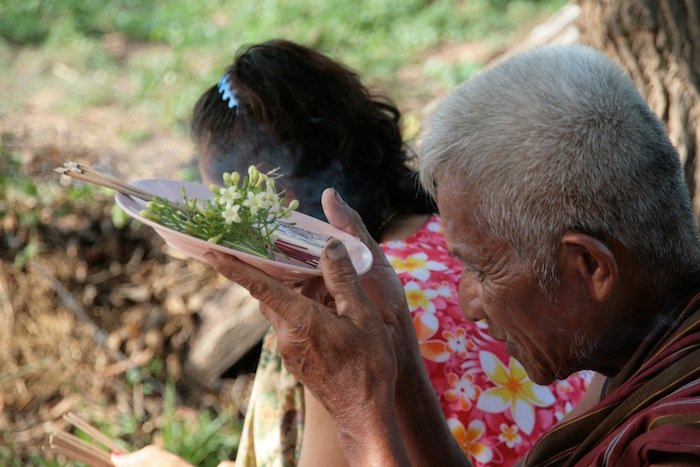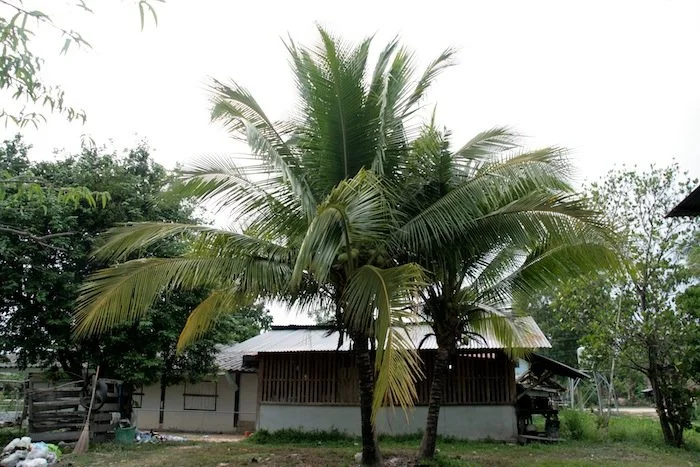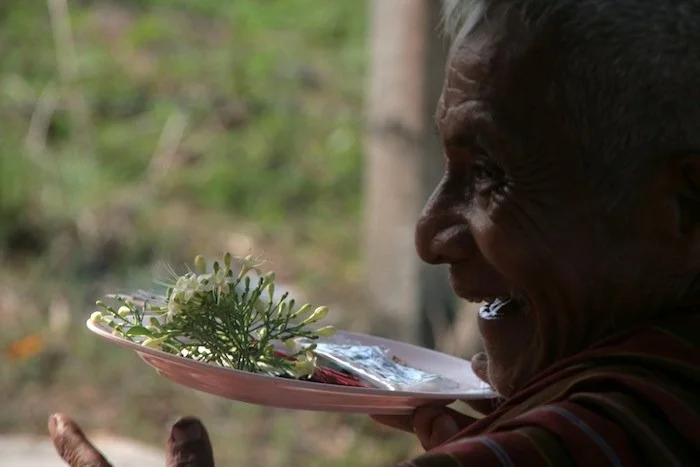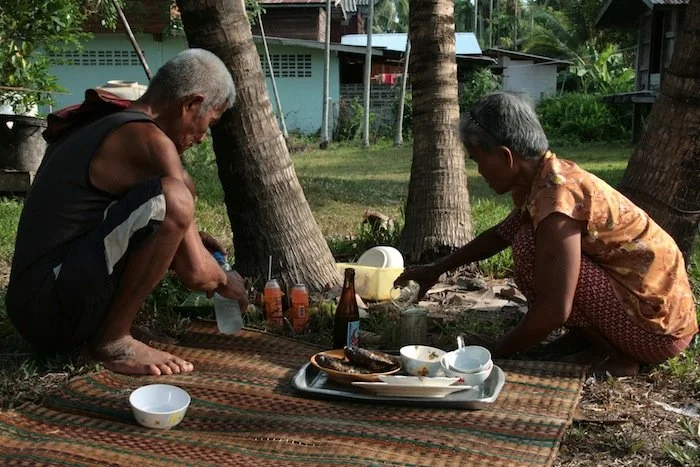Animistic rituals in Isaan, Thailand
In Thai culture, the veil between this world and the spirit world is thinner than in the West. Join us on a journey into the heart of Isaan, Thailand, where ancient animist rituals and spirit ceremonies are still very much alive.
Bilde: Familien er samlet rundt offergavene og er klar til å servere sine forfedre. Foto : Frank Hansen
Relationship with the Spirits
I was in a small village in Surin, a province in northeastern Thailand known as Isaan. There, it’s tradition to hold rituals for the spirits—especially when visitors arrive. This is because guests aren’t just entering a human space, but also stepping into the realm of the spirits. It’s considered good manners to thank the spirits for allowing you to visit, and doing so is believed to ensure a smoother, more pleasant stay. The unseen world is something people in Thailand acknowledge, respect, and relate to—both in everyday life and during special occasions.
Many Types of Spirits
In Thai belief, there are many categories of spiritual beings, and within each category, countless subtypes—nature spirits, ancestral spirits, demons, angels, and more. During the ritual we took part in, offerings were made to both the land spirits and the ancestors. In Thai tradition, nature is seen as alive and inhabited by spirits. When someone builds a house, they are also laying claim to land where spirits reside. This is where the land spirit—phra phum—comes in.
To honor these beings, small spirit houses are built on the property when a new home or business is established. In fact, nearly every building in Thailand has one (see photo below). These miniature homes serve as a residence for the land spirits, ensuring harmony between the human and spirit worlds.
Bilde: Familiens åndehus for landånden. Foto: Frank Hansen
Spirit Connection
In Thailand, connecting with the spirits is a deeply rooted tradition—especially in the countryside, where the presence of ancestral and land spirits is taken seriously and met with the utmost respect. In a small village in Isaan, one of the elders guided us through the rituals to make sure everything was done properly.
The ceremonies take place early in the morning, but preparations begin the day before. I joined a villager on a trip to the butcher to pick up pig heads—an important offering. The next morning, we carried out trays filled with fruits, liquor, betel nuts, water, juice, various dishes, and of course, the pig heads. Offerings to the land spirits are made at the spirit house, while those for the ancestors are placed in the grass just outside the home.
As the morning sun still hung low on the horizon, incense smoke curled into the air like strands of DNA. We pressed our hands together in a traditional “wai” gesture, entering a meditative state to give thanks for all the good in life and to invite the spirits to a feast. Small glasses were filled with rice whisky, and slices of pig head were served on banana leaves.
The family reminisced, and some even asked the spirits for signs—perhaps hoping for a lucky number in the weekend lottery. It was a beautiful moment—rooted in the present, yet deeply connected to both history and the unseen world.
Bilde: det er bestemte måter å utføre ritualer med åndeverden. En av de eldre var ritualenes leder. Foto: Frank Hansen
Rituals That Preserve Thai Food Culture
During ancestral rituals in Thailand, families serve the favorite dishes of their deceased loved ones. “This helps preserve our food culture,” one of the village elders explained to me.
Thailand’s culinary heritage is rich and deeply rooted in local ingredients—especially in Isaan, the northeastern region. While local markets now offer produce from nearby farms, traditional exchange still thrives. Neighbors often trade vegetables, herbs, fish, meat, and eggs with one another.
These practices not only keep old recipes and flavors alive—they also strengthen community ties, fostering a spirit of mutual support and interdependence.
Bilde: et utvalg av offergavene som består av mat og drikke, laget og presentert med sjel. Foto: Frank Hansen
Bilde: Forfedreritualet gjennomføres ved at man serverer mat til åndeverden og prater med de avdøde. Foto: Frank Hansen
Similarities to Norwegians Visiting the Cemetery
Though the rituals in Thailand may seem exotic at first glance, they share surprising similarities with Norwegian traditions when we visit the graves of our loved ones. We bring flowers—just as they do in Thai spirit rituals—and sometimes we leave behind personal items the deceased once cherished.
Much like in Thailand, we often engage in a quiet monologue with those who have passed, sharing thoughts, memories, or simply being present with them. We reminisce as we stand by the grave, feeling connected across the veil.
The key difference is perhaps the role of food. In Thailand, offering food is a central and symbolic gesture, and the rituals tend to carry a deeper sense of emotional immersion. But at their core, both traditions reflect love, remembrance, and a continued relationship with those who have gone before us.
Bilde: Den rituelle eksperten åpner ritualet med røkelse og blomster. Har du noen gang tenkt på hvorfor blomster er så sentralt i ritualer over hele verden? Foto: Frank Hansen
Hjemmene i Surin er gjerne knyttet til en rekke ressurser som urter, fiksedammer, frukt, kokospalmer etc. Foto: Frank Hansen
Disse ritualene er ikke dystre/triste som de kan være i kristne tradisjoner, men bærer preg av god stemning. Foto: Frank Hansen
A Sign of Gratitude from the Spirits
Silence. Birds chirped gently, and the scent of incense still lingered in the warm morning air. We sat in the grass, chatting quietly, surrounded by the calm that followed the ritual.
Suddenly, one of the village elders lit up. “LOOK THERE!” he said, trying to keep his voice steady. Just a few meters away, a large snake appeared—gliding gracefully through the field. The sunlight hit its skin, and it shimmered in silver and pale blue. It wasn’t afraid (though I was), nor was it threatening. It moved in slow, deliberate circles before slipping back into the jungle.
“It’s no coincidence this happened just as the ritual ended,” the elder said. “This is a very good sign. The spirits are pleased—they're thanking us.”
In Thailand, snakes are seen as sacred—especially certain types, like the cobra. For the villagers, this encounter wasn’t just nature—it was a message, a blessing from the unseen world.
Sølvslangen kom rett etter dette bildet ble tatt, da vi ryddet opp. Foto: Frank Hansen
A Few Final Thoughts
The goal of this short piece was to take you on a brief journey off the beaten path in Thailand, while offering a glimpse into a culture where the unseen world is still very much present in daily life. Small and large rituals that honor spirits are woven naturally into Thai routines—and the reason they endure, I believe, is simple: they still hold real value for the people.
These rituals feel good. They teach children the importance of generosity and selflessness—perhaps the most central value in Buddhism. They bring people together, serve as meaningful social gatherings, and are believed to generate good karma or bring luck.
Over time, I’ve learned to surrender to the practices of other cultures. What might seem foreign at first often reveals itself to be full of heart and deeply human. For me, these rituals have become beautiful, soul-centered acts—connecting people not just with each other, but also with those who came before, with the land, and perhaps even with something beyond time and space.


